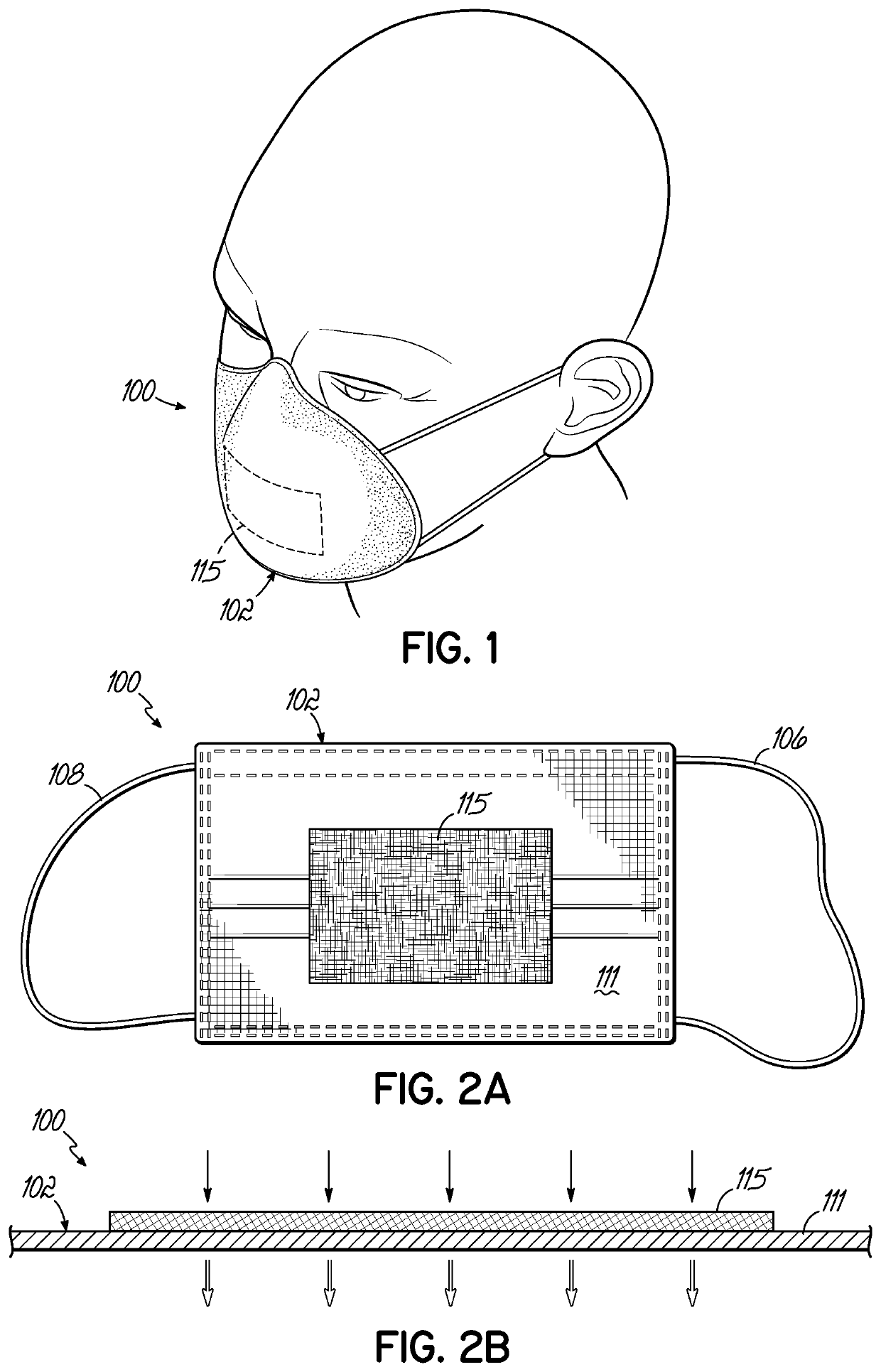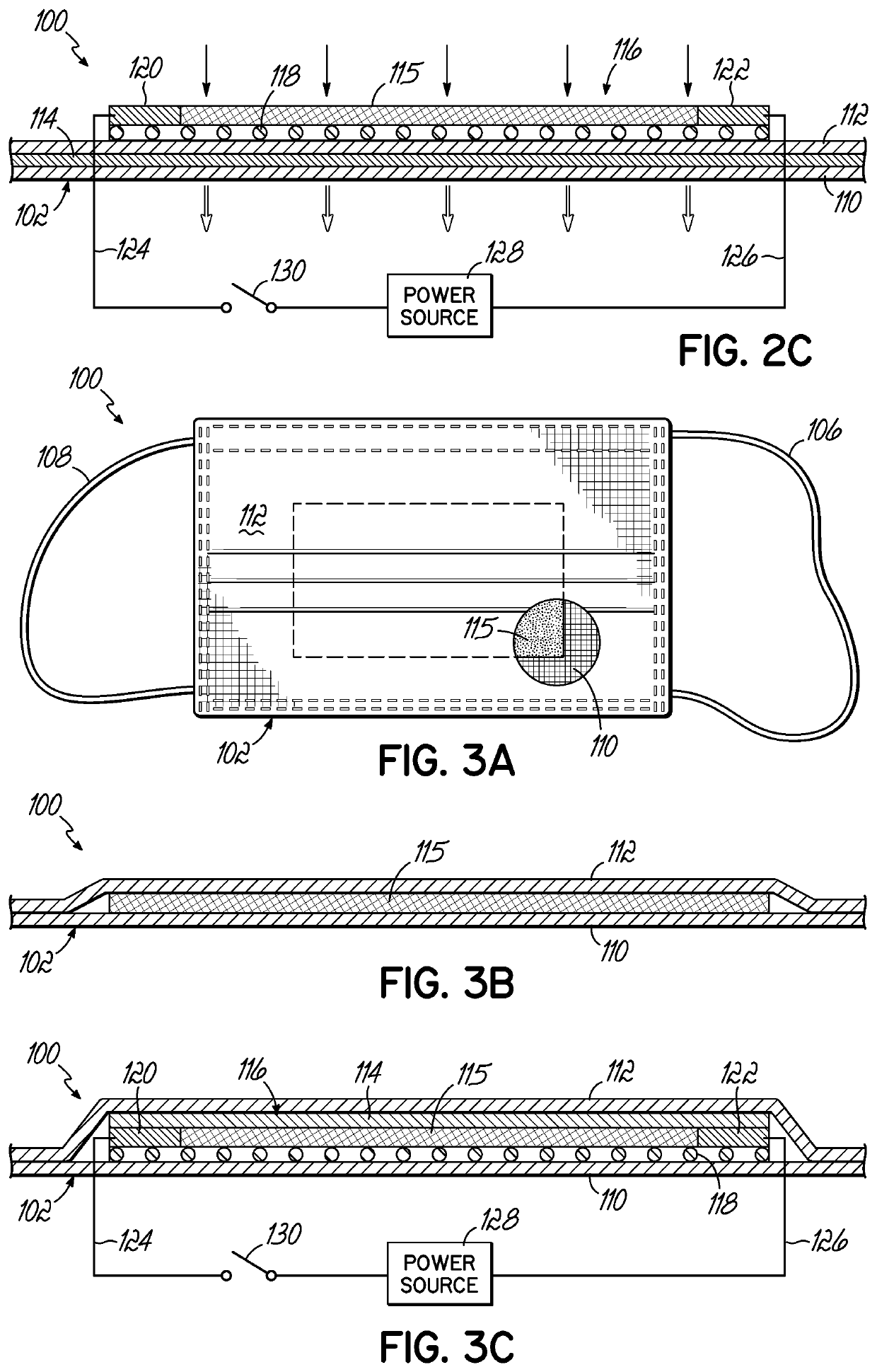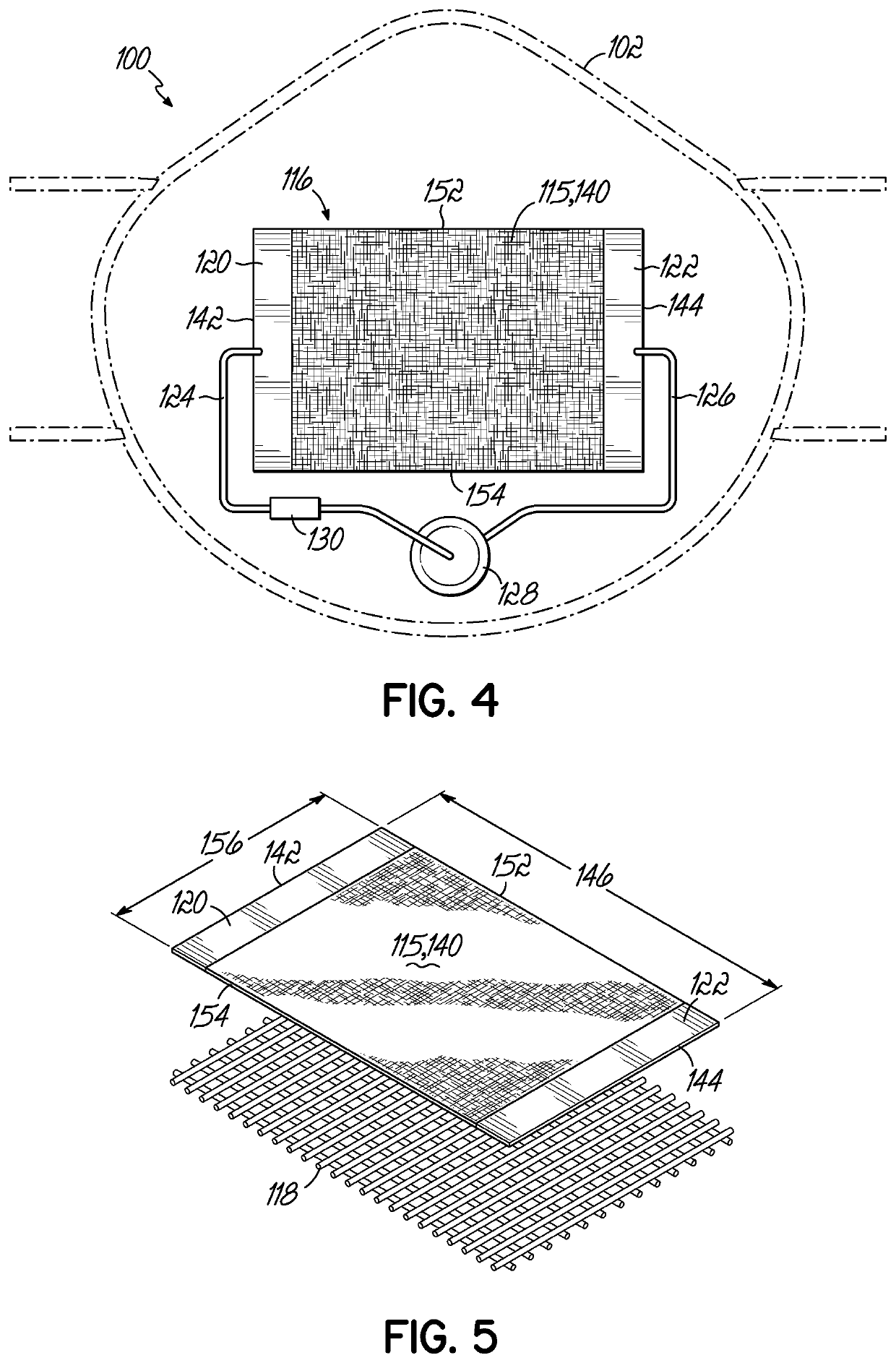Carbon-based filters for use in eliminating pathogens
a technology of carbon-based filters and pathogen elimination, which is applied in the direction of deodorants, fire extinguishers, disinfection, etc., can solve the problems of inability to completely trap all biological hazards, short supply of ppe worldwide, and conventional facemasks and respirators, etc., to achieve enhanced protection for individuals, reduce or eliminate pathogens, and enhance filtration of pathogens
- Summary
- Abstract
- Description
- Claims
- Application Information
AI Technical Summary
Benefits of technology
Problems solved by technology
Method used
Image
Examples
example 1
[0080]Pieces of personal protective equipment in accordance with principles of the invention were prepared and tested. In particular, pieces of personal protective equipment including an ASTM level 3 facemask, carbon veil heater, and a nylon insulating layer were tested to determine the degree of heat insulation offered by different nylon insulating layers. The various pieces of personal protective equipment were tested by heating the pieces of personal protective equipment via the carbon veil heater and orienting an infrared camera at the inner mask layer of the pieces of personal protective equipment.
[0081]Materials
[0082]Across the various test samples, a carbon veil with a thickness greater than or equal to 10 microns and less than or equal to 200 microns was used with a preferred thickness of 127 microns. As shown in FIG. 10, the various nylon insulating layers included (A) a 1.2 mm thick insulating layer with square holes having a length of 2 mm; (B) a 2.1 mm thick insulating l...
example 2
[0086]Pieces of personal protective equipment in accordance with principles of the invention were prepared and tested. In particular, pieces of personal protective equipment including an ASTM level 3 facemask, carbon veil heater, and a nylon insulating layer and pieces of personal protective equipment including a carbon veil heater and a PLA insulating layer were tested to determine the degree of heat insulation offered by different insulating layers. The various pieces of personal protective equipment were tested by heating the pieces of personal protective equipment via the carbon veil heater and orienting an infrared camera at the inner mask layer of the pieces of personal protective equipment.
[0087]Materials
[0088]Across the various test samples, a carbon veil with a thickness greater than or equal to 10 microns and less than or equal to 200 microns was used with a preferred thickness of 127 microns. As shown in FIG. 11, one piece of personal protective equipment included a nylon...
example 3
[0092]Pieces of personal protective equipment in accordance with principles of the invention were prepared and tested. In particular, pieces of personal protective equipment including an ASTM level 3 facemask, carbon veil heater, and at least one polyester membrane insulating layer were tested to determine the degree of heat insulation offered by different polyester insulating layers. In some embodiments, the polyester membrane insulating membranes were perforated. The various pieces of personal protective equipment were tested by heating the pieces of personal protective equipment via the carbon veil heater and orienting an infrared camera at the inner mask layer of the pieces of personal protective equipment.
[0093]Materials
[0094]Across the various test samples, a carbon veil with a thickness greater than or equal to 10 microns and less than or equal to 200 microns was used with a preferred thickness of 127 microns. As shown in FIG. 12, a first piece of personal protective equipmen...
PUM
| Property | Measurement | Unit |
|---|---|---|
| thickness | aaaaa | aaaaa |
| thickness | aaaaa | aaaaa |
| thickness | aaaaa | aaaaa |
Abstract
Description
Claims
Application Information
 Login to View More
Login to View More - R&D
- Intellectual Property
- Life Sciences
- Materials
- Tech Scout
- Unparalleled Data Quality
- Higher Quality Content
- 60% Fewer Hallucinations
Browse by: Latest US Patents, China's latest patents, Technical Efficacy Thesaurus, Application Domain, Technology Topic, Popular Technical Reports.
© 2025 PatSnap. All rights reserved.Legal|Privacy policy|Modern Slavery Act Transparency Statement|Sitemap|About US| Contact US: help@patsnap.com



